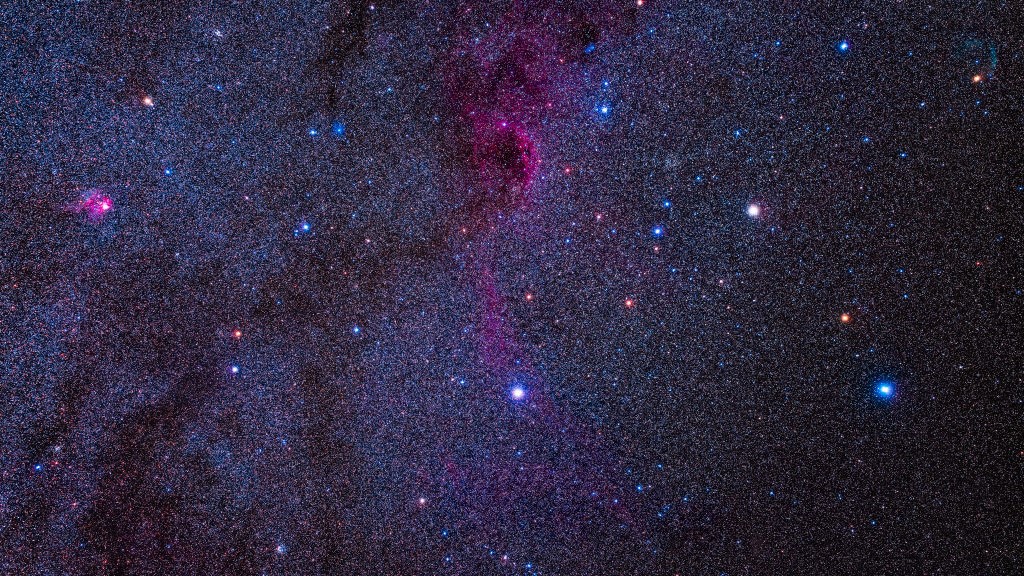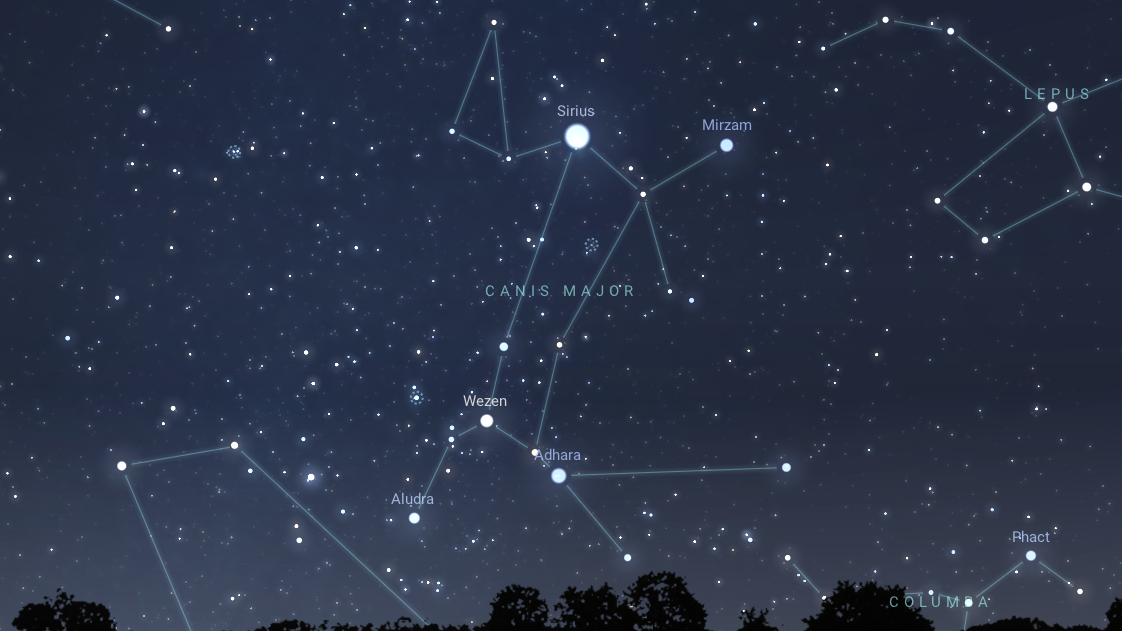
Adhara, also known as Epsilon Canis Majoris, is a striking star in the constellation Canis Major.
Shining as the second-brightest star in its constellation and the 22nd-brightest star in the night sky, Adhara offers a captivating glimpse into the wonders of the cosmos.
How to spot Adhara in the night sky
Adhara is located in the southern celestial hemisphere within the constellation Canis Major, famously home to Sirius, the brightest star in the night sky.
To find Adhara, first locate Sirius, then look just below to see a distinct triangle of bright stars. Adhara is visible in the lower right of this triangle. Adhara's 1.5 magnitude makes it relatively easy to spot in areas with minimal light pollution.
The best time to observe Adhara is during the late fall to early spring months in the Northern Hemisphere. In the Southern Hemisphere, it is visible high in the sky during the summer. Observers in latitudes north of 54°N may struggle to see Adhara due to its southerly position.
Despite its relative obscurity, astronomer Jim Kaler praised the sight of Adhara in the night sky.
"In fact, Adhara, a class B (B2) bright giant, is quite the magnificent star," he wrote. "Among the hotter of bright stars, Adhara shines with a surface temperature of some 21,900 degrees Kelvin [39,000 Fahrenheit or 22,000 Celsius], which gives it a sparkling bluish cast."

What is Adhara?
Adhara is a binary star system approximately 430 light-years from Earth. The primary star, a blue-white supergiant, is the dominant component of the system, with its companion being a fainter, less massive star. The primary star's surface temperature is an intense 20,000 Kelvin, making it one of the hottest stars visible to the naked eye.
If people could see in ultraviolet light, Adhara would be the brightest star in the sky. When taking that band of light into account, the star is about 22,300 times more luminous than the sun, Kaler added.







